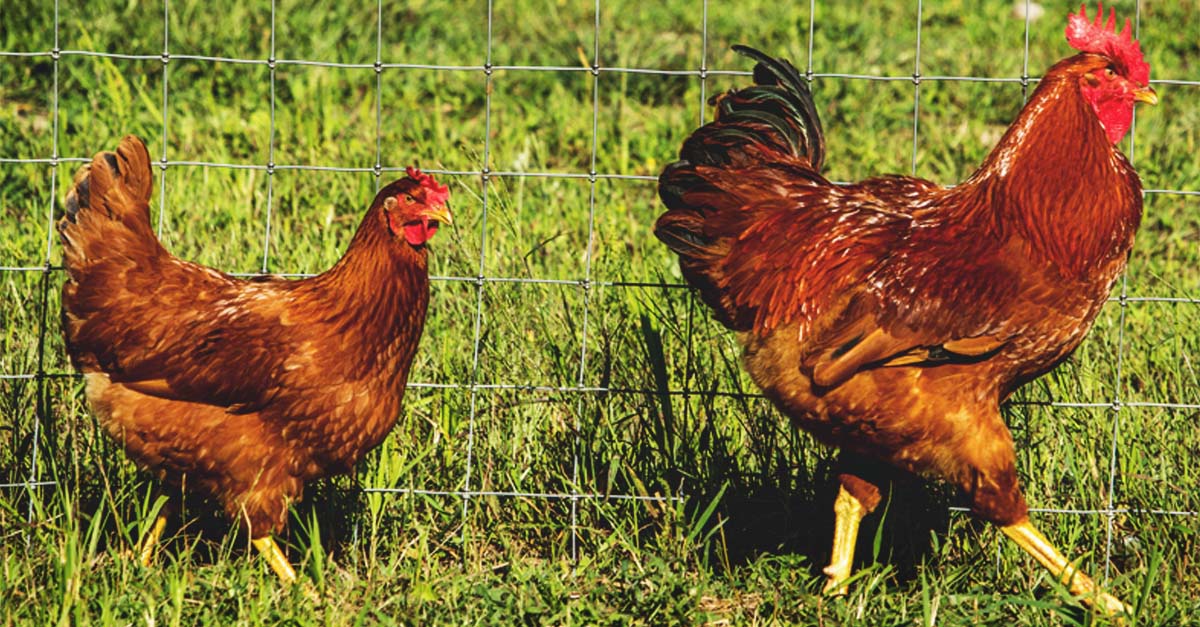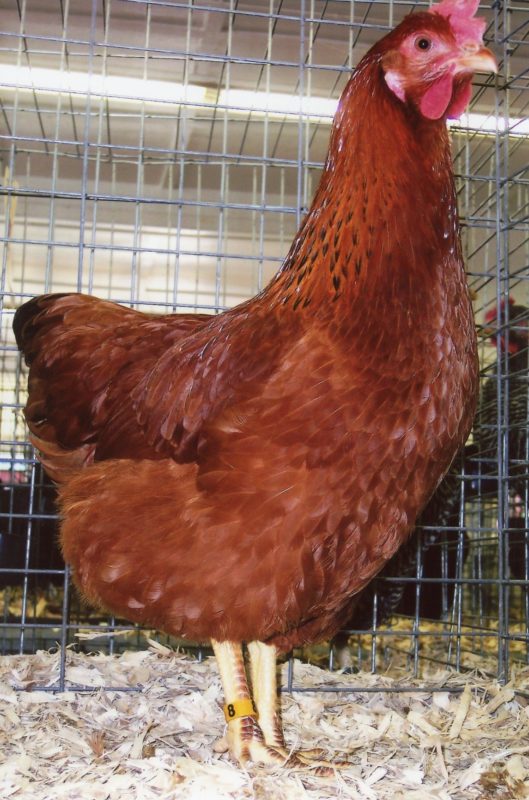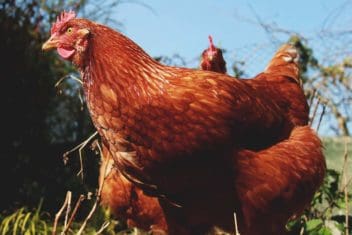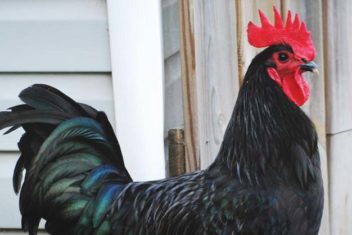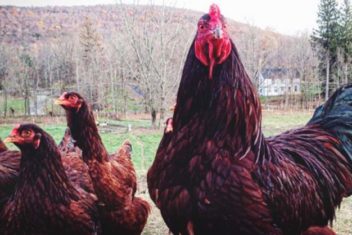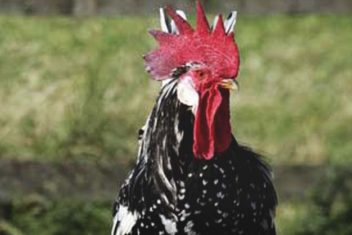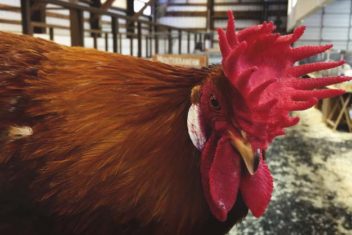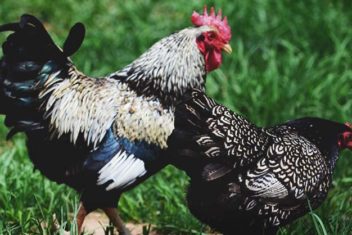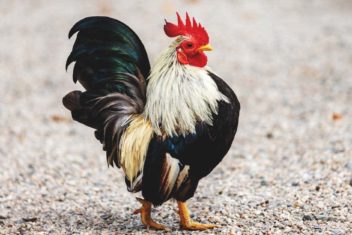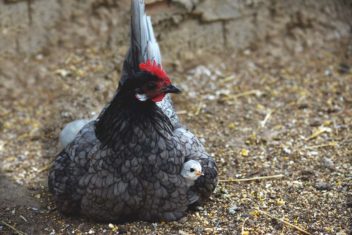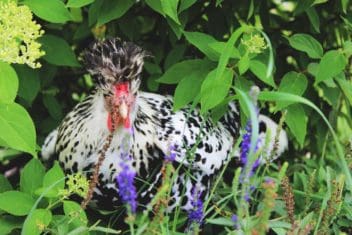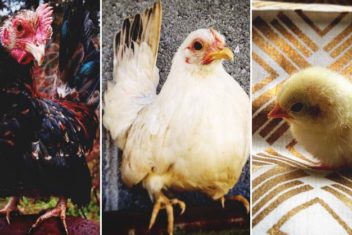When I think of a hardy, no-nonsense chicken breed with excellent production abilities, New Hampshire Red Chickens are some of the first birds that come to mind. These chickens are also an excellent bird for use in the breeding of new hybrids and chicken breeds.
New Hampshire Reds were used in the breeding of Delawares, another practical and useful chicken breed.
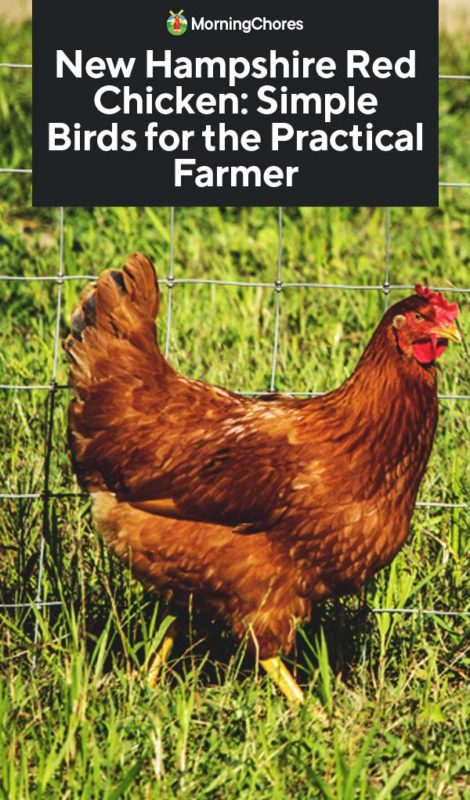
About New Hampshire Reds
When a strain of Rhode Island Reds made it into New Hampshire, they were bred and turned into the New Hampshire Reds we know today. In 1935, New Hampshire Reds were accepted into the Standard of Perfection with the American Poultry Association after 20 years of breeding.
Characteristics of New Hampshire Red Chickens
1. Size and Weight
New Hampshire Reds are bred to be broad bodied birds with heavyset figures. The full-grown weight of a New Hampshire Red hen is around 6.5 pounds. New Hampshire Red roosters weigh around 8.5 pounds when they are fully grown.
2. Temperament
Much like their ancestors, the Rhode Island Reds, New Hampshire Reds are not the most personable chickens. They can be somewhat competitive amongst their flockmates, and roosters can sometimes fight with each other if the hen to rooster ratio is not high enough. Hens are fairly docile, especially if handled regularly during their adolescent years.
3. Egg Production
Although New Hampshire Reds were originally introduced to the meat industry, they have decent egg production as well, making them the perfect dual-purpose breed. Average egg production caps out at around 240 eggs in a year.
4. Meat Production
This chicken is definitely one of the better chickens for both meat and egg production. With roosters reaching between 8 and 9 pounds, dressed out weight isn’t too shabby. The pinfeathers of this chicken don’t look bad on the carcass, making a nice looking dressed out chicken.
Caring for New Hampshire Reds
1. Feeding and Nutrition
From hatch to 12-14 weeks of age, it’s best to supply your growing birds with a good chick starter, or starter/grower. Once your chickens are reaching laying age, it’s good to transition them to a laying feed so they can lay strong and healthy eggs.
Sometimes a calcium supplement for your laying hens is needed if you frequently find yourself collecting weak or soft-shelled eggs. Calcium supplements can be purchased in the form of oyster shells at most feed stores. Feeding your hens crushed eggshells is also an affordable option for calcium supplementation.
2. Housing and Fencing
Inside your coop, provide 4 square feet per chicken to ensure everyone has enough room to coexist peacefully. New Hampshire Reds prefer their roosts a bit closer to the ground than most chickens, 2-4 feet off the ground maximum is ideal, with 12 inches of roost space per bird.
If you don’t free range your chickens, it’s best to give them at least 10 square feet per bird in the run. If you want to butcher your chickens, free-ranging them so they can eat a wider variety will make flavorful meat.
3. Health Issues and Care
New Hampshire Reds are healthy and strong chickens with minimal health issues. When your chickens do get sick, quarantine the affected birds away from the rest of the flock to try to prevent sickness from spreading. Keeping a close and observant eye on your flock goes a long way in catching an illness before it gets out of hand.
As always, keep an eye out for signs of internal and external parasites such as mites, lice, and worms.
4. Breeding
New Hampshire Reds are great breeds to use in creating hybrids, such as red sex links. These birds carry good genes for both meat and egg production, so if you’ve got some breeding projects or experiments, these chickens might be a good option for some crosses.
Breed Alternatives
1. Delawares
As a breed that originated from the New Hampshire Reds, Delawares are definitely a good alternative. Delawares are a clean, and sturdy looking breed that has fantastic meat and egg production qualities.
2. Wyandottes
Wyandottes pose as another good alternative to the New Hampshire’s due to their similar dual-purpose qualities. These chickens will spice up your yard with some gorgeous lacing and provide you with a generous amount of eggs and meat.
Did You Know?
A fourth grade class at Canaan Elementary school sent an appeal to designate the New Hampshire Red as the State Poultry. In 2018, the New Hampshire state legislature designated the breed for the State Poultry as requested by the students.
If you are a practical farmer, this is the chicken for you. New Hampshire Reds are well suited for sustainable farming, with their excellent meat and egg production qualities. You won’t regret the addition of this hardy and sustainable chicken.
